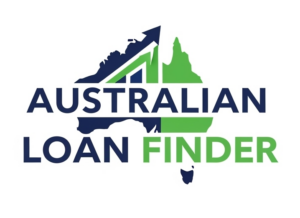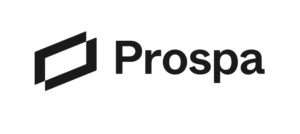Disclosure: This post contains sponsored links whereby we may receive a commission for any purchases made. The following is general information only and should not be considered financial advice.
Managing cashflow is one of the most critical challenges facing Australian businesses today. Whether you’re waiting on slow-paying clients, planning for seasonal fluctuations, or seizing a growth opportunity, having access to the right funding at the right time can make all the difference between thriving and merely surviving.
Cashflow business loans offer Australian SMBs a lifeline, providing quick, flexible capital to bridge gaps, cover expenses, and fuel expansion without depleting reserves. But with so many options available in 2025, from invoice financing to revenue-based loans, knowing which solution fits your business model, trading cycle, and risk profile is essential.
This guide breaks down the top eight cashflow business loans available to Australian businesses, explaining how each works, who they’re best suited for, and what terms and costs to expect. Whether you’re a B2B wholesaler chasing unpaid invoices or a seasonal retailer needing flexible repayments, you’ll find a funding option here that aligns with your cashflow needs and business goals.
Top Cashflow Loan Providers For Australian Businesses For December 2025
1) Australian Loan Finder

Australian Loan Finder is an Australian-owned business finance provider helping local small businesses access fast, flexible, and transparent funding through partnerships with reputable Australian lenders. Unlike traditional banks or generic loan marketplaces, Australian Loan Finder offers a direct, streamlined approach to business finance—acting as your dedicated finance partner from application to funding. Businesses can apply online in just 2 minutes, with loans available from $5,000 to $500,000, and receive personalised funding options designed around their needs. For eligible borrowers, no upfront security is required on loans under $150,000, and decisions can be made within hours—with funds often available in as little as 24 to 72 hours.
With fixed, clear pricing, loan periods ranging from 3 months to 5 years, and customisable repayment plans that work with your cash flow, Australian Loan Finder provides business owners with the information and control they need to develop confidently. Whether you’re managing day-to-day operations or investing in growth, Australian Loan Finder makes it easier to get funding—allowing you to focus on what matters most: operating your business.
2) Lumi

Introduction to Lumi
Lumi stands at the forefront of small business financing solutions in Australia, offering a robust platform that prioritizes flexibility and transparency.
With a commitment to empowering businesses, Lumi provides unsecured loans ranging from anywhere from $5,000 to $300,000, helping to simplify the lending process for entrepreneurs.
Lumi Business Loan Application Process
- Quick:Simple online application process to submit your information and the type of loan your after to get started
- Simple: Simply gather your ABN/ACN, driver’s license, and bank details and find out pretty quick if your approved
- Fast: Approval can come as fast as 2 hours, and funding can hit your account within the same business day
Features of Lumi Business Loans
- Loan Amount Flexibility: Borrowers can access loans ranging from $5,000 to $300,000, accommodating diverse business needs
- Speedy Application and Approval: Lumi’s emphasis on quick processing allows applicants to receive funds within the same business day, facilitating timely responses to business opportunities
- Transparent Fee Structure: Lumi sets itself apart with minimal fees, notably a 2.5% establishment fee, providing clarity and predictability for borrowers
- Unsecured Loans: With a focus on inclusivity, Lumi offers unsecured business loans, eliminating the need for collateral for amounts up to $300,000
- Flexible Repayment Options: Weekly repayment frequencies, principal and interest repayment types, and the option for extra repayments contribute to a borrower-friendly repayment structure
- Early Repayment Benefits: Lumi distinguishes itself by allowing borrowers to pay off their loans early without incurring penalties. Early payout options and discounts are available, with principal-only payouts accessible after 6 months
- Eligibility Criteria: Lumi caters to businesses that are at least six months old, with a minimum annual turnover of $50,000, establishing accessibility for a broad range of enterprises
3) Prospa

Overview of Prospa
Navigating the landscape of small business loans in Australia? Prospa is another solid contender in the market across both Australia and New Zealand. Prospa provides small business owners with a quick and simple way to obtain financing, and it has already assisted thousands of Australian small enterprises. Prospa received the Deloitte Tech Fast 50 in 2015, after increasing by 6071% in three years, making it Australia’s fastest growing technology firm and Asia’s third quickest. Prospa was a Telstra Business Awards finalist in 2015 and ranked 33rd globally as a leading innovator in KPMG’s Fintech 100.
How Prospa Small Business Loans Work
Prospa offers loans from $5,000 up to $500,000 for cash flow or growth. You can apply online in about 10 minutes and often get a decision the same day (with funds possible in 24 hours).
Loans of less than $150,000 do not require any upfront security. Loan interest rates vary depending on your business and are calculated beforehand. This allows you to understand the complete cost before borrowing. Early repayment options are available to save interest.
Benefits of Prospa Business Loan
Choosing Prospa for your business financing needs means opting for a partner who understands the nuances of small Australian businesses.
Simple Application Steps: Prospa ensures a straightforward application process that respects your time and urgency. With an online form that takes around 10 minutes, you’re on your way to financial support without unnecessary delays.
Flexible Loan Uses: Prospa allows you to utilize the loan for various business objectives, from buying supplies to expanding your team or renovating your workspace. Your business, your choices.
Variable Loan Durations: With loan periods ranging from 3 months to 3 years, Prospa caters to different business needs. Whether you want a short-term loan (boost) or a more extended financial support plan, Prospa offers flexibility.
Modular Payment Schedules: Prospa understands that one repayment schedule doesn’t fit all. You have the freedom to schedule repayments based on your business’s cash flow, choosing between weekly and daily payments.
Quick Approval and Funding: Prospa lives up to its promise of being swift. A 10-minute online application, coupled with approval possible within the hour depending on your scenario ensures you don’t miss out on capital.
Prospa’s business loans offer numerous advantages:
- Streamlined application: The online form takes only 10 minutes to complete, respecting your time and urgency.
- Versatile loan purposes: Use funds for various business objectives, including purchasing supplies, expanding your team, or renovating your workspace.
- Flexible loan terms: Choose from loan periods ranging from 3 months to 3 years, tailored to your specific business needs.
- Customisable repayment options: Schedule repayments based on your business’s cash flow, with weekly and daily payment options available.
- Rapid approval process: Depending on your situation, approval is possible within an hour of application submission.
1. Invoice Financing: Convert Unpaid Invoices Into Immediate Cash

Invoice financing is a game-changer for Australian businesses stuck waiting on customer payments. Instead of letting cash sit idle in accounts receivable for 30, 60, or even 90 days, businesses can unlock the majority of that value almost immediately, turning invoices into working capital when they need it most.
How Invoice Financing Works
Here’s the process in a nutshell: a business submits its outstanding invoices to a lender, who advances a percentage of the invoice value, typically 80–95%, within 24 to 48 hours. The funds hit the business account quickly, enabling them to pay suppliers, cover payroll, or invest in new orders without waiting for customers to settle their bills.
Once the customer pays the invoice in full, the lender releases the remaining balance to the business, minus their service fee (usually 1–5% of the invoice value, depending on terms and risk). Some arrangements involve the lender taking over collections (invoice factoring), while others remain confidential (invoice discounting), where the business continues to manage its customer relationships directly.
This setup transforms slow-moving receivables into liquid capital, keeping operations smooth and preventing cashflow bottlenecks.
Invoice financing is particularly well-suited for B2B companies that invoice clients on extended payment terms, think 30, 60, or 90 days. It’s a natural fit for industries like manufacturing, wholesale distribution, professional services, construction, and labour hire, where payment delays are common but operational expenses can’t wait.
SMBs experiencing rapid growth or seasonal demand spikes also benefit, as they can fund increased activity without taking on long-term debt or giving up equity. If your business has solid invoices from creditworthy customers but struggles with timing gaps, invoice financing offers a fast, flexible solution to keep cashflow healthy and predictable.
2. Business Lines of Credit: Flexible Access to Working Capital
A business line of credit is one of the most versatile cashflow tools available to Australian SMBs. Unlike a traditional term loan, where you receive a lump sum upfront and start paying interest immediately, a line of credit works more like a business credit card, offering revolving access to funds that you can draw on, repay, and redraw as needed.
Key Advantages for Managing Cashflow
The biggest advantage? Flexibility. Businesses only pay interest on what they actually use, not the full credit limit. This makes lines of credit ideal for covering short-term expenses, managing irregular income, or taking advantage of time-sensitive opportunities, like snapping up discounted inventory or covering payroll during a slow month.
Because the facility is revolving, once you repay what you’ve borrowed, that amount becomes available again. This ongoing access means businesses can manage cashflow more strategically, without reapplying for new loans every time a need arises. It’s especially useful for firms with unpredictable revenue cycles, where expenses don’t always align neatly with income.
Another key benefit: speed. Once approved, funds are typically accessible within days, and many lenders offer online portals or apps for instant drawdowns, perfect for urgent, unexpected costs.
3. Merchant Cash Advances: Fast Funding Based on Sales Volume

Merchant cash advances (MCAs) are a fast, accessible funding option for Australian businesses with consistent card or EFTPOS sales. Unlike traditional loans, MCAs are repaid as a percentage of daily credit card or debit card transactions, making repayments naturally align with sales volume, ideal for businesses with fluctuating revenue.
Understanding Factor Rates vs Interest Rates
One of the most important things to understand about MCAs is that they don’t use traditional interest rates. Instead, they use a factor rate, a multiplier applied to the advance amount. For example, if a business borrows $20,000 with a factor rate of 1.3, the total repayment is $26,000 ($20,000 × 1.3).
This might sound straightforward, but factor rates can be deceptive. Because repayments are tied to sales volume and happen over a short period (often 3–12 months), the effective annual percentage rate (APR) can be quite high, sometimes 30–80% or more, depending on how quickly the advance is repaid.
Unlike interest-based loans, where you can save by paying off early, MCAs have a fixed total cost. Whether you repay in three months or twelve, you still owe the same amount. That makes it crucial to calculate the true cost and compare it carefully against other cashflow options.
Who Should Consider This Option
MCAs work best for businesses that process a high volume of card transactions, think retail stores, cafés, restaurants, gyms, salons, and e-commerce businesses. If daily sales are strong and consistent, the automatic repayment structure (a small percentage taken from each transaction) can feel almost invisible, without disrupting cashflow.
They’re also a solid choice for businesses that need funding urgently and may not qualify for traditional loans due to limited trading history, lower credit scores, or lack of collateral. Approval can happen in as little as 24–48 hours, with funds hitting accounts shortly after.
But, MCAs aren’t suitable for everyone. Businesses with thin margins, inconsistent sales, or long-term funding needs should proceed with caution. The high cost and rapid repayment schedule can strain cashflow if sales dip unexpectedly. Use MCAs strategically, for short-term opportunities or urgent needs, not as a long-term cashflow solution.
4. Short-Term Business Loans: Quick Cash for Immediate Needs

Short-term business loans are designed for speed and simplicity. When a business needs capital fast, whether to cover an unexpected expense, take advantage of a limited-time opportunity, or smooth over a temporary cashflow dip, these loans deliver.
Typically, short-term loans provide fixed amounts ranging from $5,000 to $500,000, with repayment periods between 3 and 24 months. They’re structured with regular (often weekly or monthly) repayments, giving businesses a clear, predictable schedule to budget around.
Repayment Terms and Eligibility Requirements
Repayment terms for short-term business loans are straightforward: fixed installments over a set period, with interest either calculated upfront or amortized over the loan term. Some lenders offer daily or weekly repayments, which can help businesses with frequent sales cycles manage obligations more smoothly.
Interest rates vary widely depending on the lender and the business’s risk profile. Traditional banks may offer rates as low as 6–12% per annum for low-risk borrowers, while alternative and online lenders might charge 15–30% or more for faster approvals and less stringent criteria.
Eligibility requirements typically include:
- Trading history: Most lenders want to see at least 6–12 months of consistent business operation, though some fintech lenders accept newer businesses with strong sales.
- Revenue: Minimum monthly or annual revenue thresholds (often $10,000+ per month) help lenders assess repayment capacity.
- Credit score: While not always a deal-breaker, a good business or personal credit score improves approval odds and may unlock better rates.
- Bank statements: Lenders review recent bank statements (typically 3–6 months) to verify revenue, expenses, and cashflow stability.
Short-term loans are ideal for businesses that need capital quickly, have a clear repayment plan, and want to avoid long-term debt obligations. They’re a practical choice for covering inventory purchases, unexpected repairs, marketing campaigns, or bridging cashflow gaps, but the relatively high cost means they’re best used for high-return, short-duration needs rather than ongoing working capital.
5. Trade Finance: Bridging Gaps in Import-Export Transactions

For Australian businesses involved in international trade, timing is everything. Whether you’re importing goods from overseas suppliers or exporting products to foreign buyers, the gap between paying for inventory and receiving customer payments can create serious cashflow strain. That’s where trade finance comes in.
How Trade Finance Supports Cashflow
Trade finance is specifically designed to smooth out the cashflow cycles inherent in import-export transactions. It provides businesses with the capital they need to pay suppliers, fulfill orders, or cover shipping and logistics costs before receiving payment from customers.
Here’s how it typically works: a lender advances funds to cover the cost of goods or services being imported or exported. This might take the form of a letter of credit (guaranteeing payment to a supplier once goods are shipped), a bill of exchange, or a documentary collection. The business then repays the lender once the goods are sold or the customer pays.
This structure allows businesses to maintain healthy cashflow while scaling their trade operations, without tying up capital in inventory or waiting months for international payments to clear. It also reduces risk, lenders often provide guarantees that protect both buyers and sellers in cross-border transactions.
Australian Lenders Offering Trade Finance
Several major Australian banks and specialty lenders offer trade finance facilities tailored to SMBs and larger enterprises. The big four banks, NAB, Commonwealth Bank (CBA), Westpac, and ANZ, all provide comprehensive trade finance solutions, including letters of credit, bank guarantees, and documentary collections.
Beyond the major banks, specialty lenders like ScotPac, Octet, and Cashflow Finance offer flexible trade finance options, often with faster approval times and more personalized service. These lenders can be particularly helpful for smaller businesses or those with less established trading histories who might not meet the stricter criteria of traditional banks.
Trade finance is best suited for businesses regularly engaged in import-export activities, dealing with overseas suppliers or buyers, and needing to manage the cashflow challenges of international trade cycles. If your business is growing its global footprint, trade finance can be a critical tool to fund expansion without draining working capital.
6. Equipment Financing: Preserve Capital While Acquiring Assets

Equipment financing allows Australian businesses to acquire essential assets, machinery, vehicles, technology, tools, without paying the full purchase price upfront. Instead, the cost is spread over time through regular repayments, preserving cashflow for day-to-day operations, payroll, and growth initiatives.
Impact on Business Cashflow Management
The primary benefit of equipment financing is simple: it protects your working capital. Rather than depleting cash reserves to buy a $50,000 piece of machinery or a fleet of delivery vans, businesses can finance the purchase and pay it off over 1–7 years, depending on the asset’s useful life.
This approach keeps cashflow healthy and flexible, allowing businesses to invest in growth, respond to unexpected expenses, or take advantage of new opportunities without being cash-strapped. It’s especially valuable for capital-intensive industries like construction, manufacturing, transport, agriculture, and healthcare, where equipment is essential but expensive.
Equipment financing also offers potential tax advantages. In Australia, businesses may be able to claim depreciation and interest deductions, and in some cases, access instant asset write-offs or accelerated depreciation schemes. This can reduce the effective cost of financing and improve overall cashflow.
Another advantage: because the equipment itself serves as collateral, lenders often offer more favorable terms, lower interest rates, higher approval rates, and less stringent eligibility criteria, compared to unsecured loans.
Repayment structures are typically straightforward, with fixed monthly or quarterly instalments. Some lenders offer flexible terms, including seasonal payment schedules for businesses with fluctuating income (like farming or tourism).
Whether you’re upgrading technology, expanding production capacity, or replacing aging equipment, financing lets you acquire what you need without compromising cashflow. It’s a smart way to invest in your business’s future while keeping your financial position strong and stable.
7. Debtor Finance: Unlock Capital Tied Up in Receivables

Debtor finance is an umbrella term for financing solutions that allow Australian businesses to access funds based on their outstanding invoices or receivables. It’s a powerful cashflow tool for businesses that invoice clients but face delays in payment, helping them unlock capital that would otherwise sit locked in accounts receivable.
Difference Between Debtor Finance and Invoice Factoring
While the terms are often used interchangeably, there are subtle but important differences between debtor finance and invoice factoring.
Invoice factoring typically involves the lender (factor) purchasing the invoices outright and taking over the responsibility of collecting payment from customers. The lender manages the sales ledger and communicates directly with the business’s clients about payment. This can be efficient, but some businesses worry it might affect customer relationships or signal financial difficulty.
Invoice discounting (a common form of debtor finance) is more confidential. The business retains control of its sales ledger and continues to collect payments from customers directly. The lender provides an advance against the invoices, and the business repays the lender once customers pay. Clients are typically unaware that financing is involved.
Both options provide fast access to cash, usually 80–95% of invoice value, within 24–48 hours. The remaining balance (minus fees) is paid once the customer settles the invoice.
Debtor finance is particularly useful for businesses with large or growing receivables ledgers, strong customer creditworthiness, and predictable payment cycles. It’s common in industries like staffing, recruitment, wholesale, transport, and professional services.
The key advantage? It turns slow-paying invoices into immediate working capital, enabling businesses to meet payroll, pay suppliers, invest in growth, and avoid the cashflow stress of waiting weeks or months for customer payments. For businesses with solid receivables but tight cashflow, debtor finance can be a lifeline.
8. Revenue-Based Financing: Repay Based on Your Income

Revenue-based financing (RBF) is a flexible funding model that ties repayments directly to a business’s income. Instead of fixed monthly instalments, businesses repay a percentage of their revenue, meaning repayments fluctuate with sales. When revenue is strong, payments are higher: when sales drop, payments decrease proportionally.
Why This Suits Seasonal Businesses
For businesses with seasonal or cyclical revenue patterns, think tourism, retail, hospitality, agriculture, or events, revenue-based financing is a natural fit. Traditional loans with fixed repayments can strain cashflow during slow periods, but RBF adjusts to the business’s actual income, reducing stress and helping avoid default.
This structure also suits startups and high-growth businesses with variable or unpredictable revenue. Instead of being locked into rigid repayment schedules, they can scale repayments with their success, making it easier to manage cashflow while investing in growth.
RBF lenders typically advance funds based on monthly revenue projections and take a fixed percentage of revenue (usually 5–20%) until the loan, plus a fee or multiple, is repaid. For example, a business might receive $50,000 and agree to repay 10% of monthly revenue until a total of $60,000 is repaid.
Pros and Cons for Australian Businesses
Pros:
- Flexibility: Repayments adjust to revenue, reducing strain during slow periods.
- No fixed collateral: RBF is often unsecured or based on revenue history, making it accessible for businesses without significant assets.
- Fast approval: Many RBF lenders offer quick application and funding processes, with funds available in days.
- Equity-free: Unlike venture capital or private equity, RBF doesn’t require giving up ownership or control.
Cons:
- Higher cost: The total repayment (including fees or multiples) can be significantly higher than traditional loans, effective APRs can reach 20–50% or more.
- Revenue dependency: If sales are inconsistent or low, repayment can drag on longer, increasing total cost.
- Limited availability: RBF is still emerging in Australia, with fewer lenders offering it compared to traditional financing.
- Not for all businesses: Businesses with very low margins, irregular income, or slow growth may find the cost prohibitive.
Revenue-based financing works best for businesses with strong, recurring revenue streams and growth potential, especially e-commerce, SaaS, subscription services, and seasonal operations. It offers flexibility and speed, but businesses should carefully weigh the higher cost against the benefits before committing.
Conclusion
Cashflow is the lifeblood of any business, and having access to the right funding at the right time can mean the difference between seizing opportunities and missing out, or worse, struggling to cover basic expenses. The good news for Australian SMBs in 2025 is that there’s a diverse range of cashflow business loans available, each designed to address specific needs, industries, and revenue cycles.
From invoice financing that turns unpaid receivables into immediate capital, to flexible lines of credit that provide ongoing access to working capital, to revenue-based financing that adjusts repayments with your income, there’s a solution to fit almost every cashflow challenge.
The key is understanding your business’s unique cashflow patterns, growth goals, and financial position. Match those to the right product, whether it’s a short-term loan for urgent needs, equipment financing to preserve capital, or trade finance to support international expansion, and you’ll be better positioned to manage expenses, invest in growth, and weather economic ups and downs.
Before committing to any loan, take the time to compare terms, calculate the true cost (including fees and effective interest rates), and consider how repayments will fit into your cashflow cycle. And don’t hesitate to consult with a financial advisor or accountant to ensure you’re making the best choice for your business’s long-term health and success.
Key Takeaways
- Cashflow business loans in Australia provide flexible funding solutions to bridge payment gaps, manage seasonal fluctuations, and fuel growth without depleting reserves.
- Invoice financing and debtor finance allow Australian businesses to convert unpaid invoices into immediate working capital, typically advancing 80–95% of invoice value within 24–48 hours.
- Business lines of credit offer revolving access to funds with interest charged only on amounts used, making them ideal for managing irregular income and unexpected expenses.
- Revenue-based financing adjusts repayments based on actual income, making it particularly suitable for seasonal Australian businesses like retail, hospitality, and tourism.
- Equipment financing preserves cashflow by spreading asset costs over time while potentially offering tax advantages through depreciation and instant asset write-offs in Australia.
Why Trust AGR Technology?
Alessio Rigoli launched AGR Technology in 2013 with the intention of focusing on YouTube and blogging on technology issues such as Android, Cyber Security, Blockchain, and EdTech. Since then, the business has grown to cover services such as website creation, hosting, software development, and digital marketing. AGR Technology assists companies in a range of industries by providing innovative and high-quality technology solutions to help them thrive.
Note: This is not financial advice and is just designed to provide general information. While we run our own checks and assess each company included on our website, we may not have covered all options. If you decide to apply for a product, you will interact directly with the vendor, not AGR Technology. AGR Technology suggests that you read the appropriate PDS or offer documents before accepting any financial product offer to assess whether the products are suitable for you. Target Market Determinations are available on the provider’s website.
AGR Technology may receive a commission on sales generated by partner links on this page, but this has no influence on our opinions or evaluations and is completely free of charge to you. While we make every attempt to keep our content up-to-date this should not be taken as financial advice, be sure to seek professional advice if required.
Factors considered when writing this article:
We set criteria for picking loan platforms to analyse, such as reputation, services offered, user base, regulatory compliance, types of loans available and the years of operation along with browsing the respective websites to validate they have licences and compliance to operate in Australia, as well as other things like KYC protocols and contacting the companies.
Checked each platform for user-friendly design interfaces to ensure platforms are straightforward for beginners and more experienced customers to grasp. We obtained information about each company by visiting their separate websites, signing up for an account, reading user reviews, and looking for recent news or events related to the platforms.
Frequently Asked Questions
What are cashflow business loans and how do they work in Australia?
Cashflow business loans provide Australian SMBs with quick, flexible capital to bridge financial gaps, cover expenses, and fuel growth. They work by offering various funding options like invoice financing, lines of credit, or revenue-based loans that align with your business’s trading cycle and repayment capacity.
How quickly can Australian businesses access cashflow business loans?
Most cashflow business loans in Australia offer rapid approval and funding. Invoice financing and merchant cash advances can provide funds within 24–48 hours, while business lines of credit and short-term loans typically disburse within a few days of approval.
What is the difference between invoice financing and invoice factoring?
Invoice financing is a broader term encompassing various receivables-based funding. Invoice factoring involves the lender purchasing invoices and managing collections directly, while invoice discounting allows businesses to maintain confidential control over customer relationships and collections while receiving advances.
Can startups with limited trading history qualify for cashflow business loans?
Yes, certain cashflow loans suit newer businesses. Merchant cash advances and some fintech lenders offering short-term loans or revenue-based financing accept businesses with 6–12 months trading history and strong sales volume, even with limited credit history or collateral.
What are the typical interest rates for business lines of credit in Australia?
Australian business lines of credit typically charge 5–15% per annum from traditional lenders, depending on credit profile and trading history. Fintech lenders may charge 15–25% but offer faster approvals and more flexible eligibility criteria for SMBs.
Is revenue-based financing better than traditional loans for seasonal businesses?
Revenue-based financing often suits seasonal businesses better because repayments adjust to income fluctuations. When sales drop during slow periods, payments decrease proportionally, unlike fixed traditional loan repayments that can strain cashflow regardless of revenue performance.
Source(s) cited:
[Online]. Available at: https://smgcars.com/wp-content/uploads/2023/10/dealershi-contract.jpg (Accessed: 13 October 2025).
[Online]. Available at: https://tse1.mm.bing.net/th/id/OIP.JVbzmpOvsTrEW1mq9_8qfQHaE8?cb=12&rs=1&pid=ImgDetMain&o=7&rm=3 (Accessed: 13 October 2025).

Alessio Rigoli is the founder of AGR Technology and got his start working in the IT space originally in Education and then in the private sector helping businesses in various industries. Alessio maintains the blog and is interested in a number of different topics emerging and current such as Digital marketing, Software development, Cryptocurrency/Blockchain, Cyber security, Linux and more.
Alessio Rigoli, AGR Technology
![logo-new-23[1] logo-new-23[1]](https://agrtech.com.au/wp-content/uploads/elementor/thumbs/logo-new-231-qad2sqbr9f0wlvza81xod18hkirbk9apc0elfhpco4.png)

